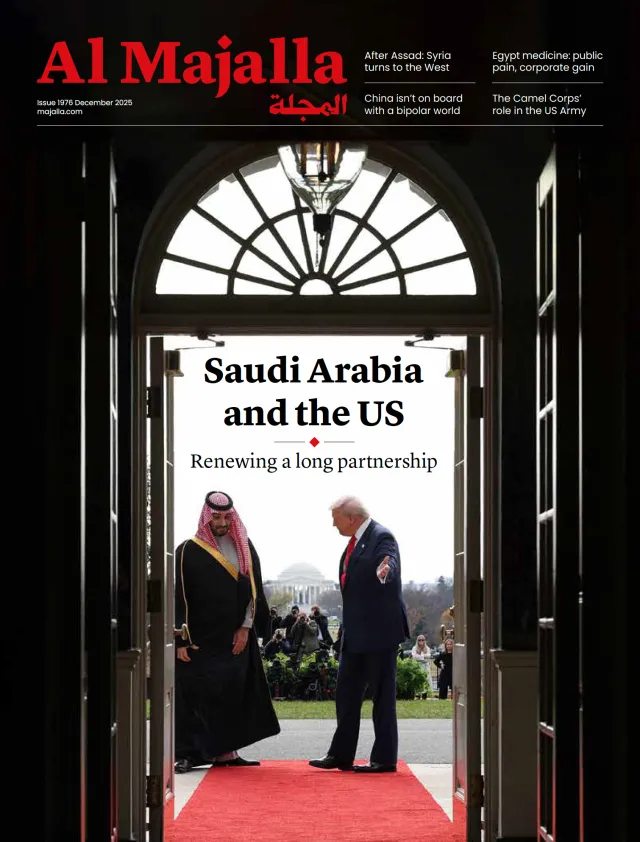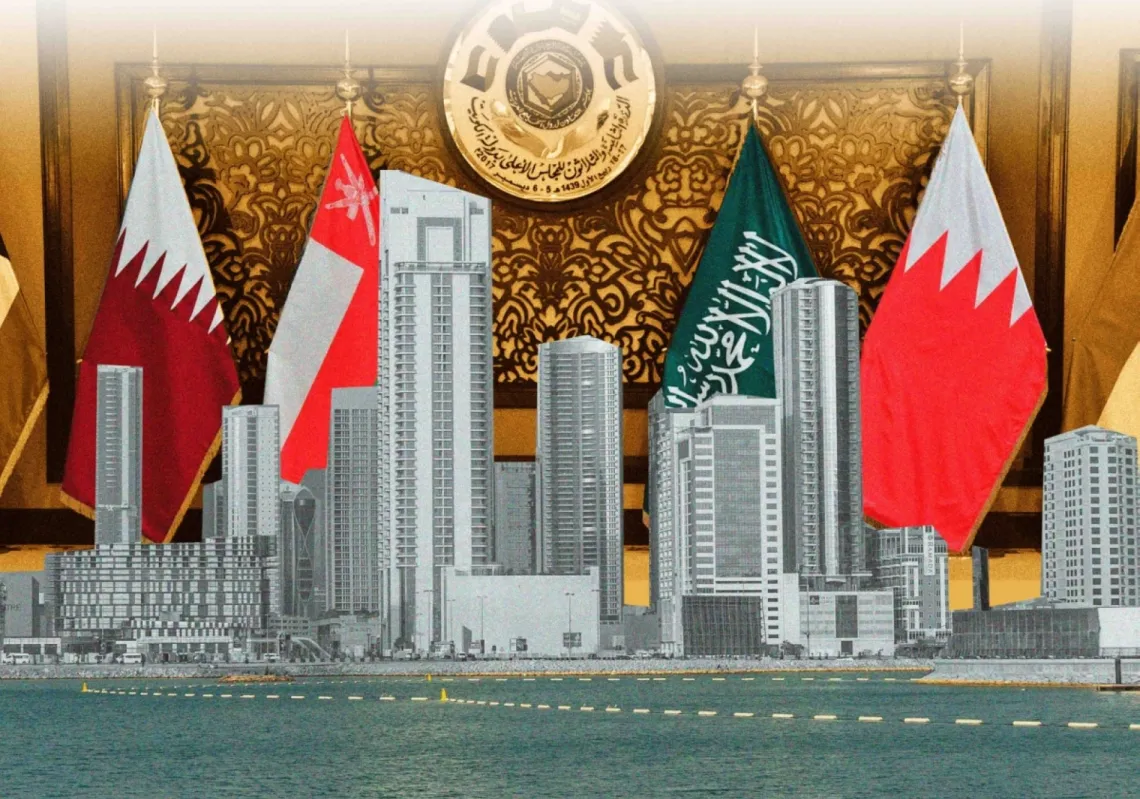In early January 1975, Syrian President Hafez al-Assad visited the Lebanese border town of Chtoura to meet his Lebanese counterpart, Suleiman Frangieh, in his first and last visit to Lebanon. Chtoura had been the traditional meeting place for leaders of both countries since the 1940s. The purpose of the meeting was to discuss repeated Israeli attacks on Lebanon, which since 1968 had numbered 44, claiming nearly 900 Lebanese and Palestinian lives, including a ground incursion in 1972.
Four months after the Assad-Frangieh summit, the Lebanese Civil War erupted on 13 April 1975, following an armed attack on a bus transporting Palestinians in the Christian Ain El Remmaneh neighbourhood, which ignited violence between Palestinian factions and the Lebanese Phalange, led by Bachir Gemayel.
Al-Assad found himself facing two bitter choices: either the Maronites would declare their own state backed by Israel, or the Palestinians would tighten their grip on Lebanon, provoking Israeli retaliation. Al-Assad had no love for Palestinian leader Yasser Arafat and considered military intervention to curb his influence, justifying it as a threat to Syria’s security. The US Embassy in Damascus, however, had repeatedly warned against any Syrian intervention, leaving the situation unresolved until March 1976.
US policy shift
Suddenly, Washington’s stance changed, and Secretary of State Henry Kissinger sent reassuring messages to Damascus that the Nixon administration would not oppose Syrian intervention in Lebanon. Years later, some compared this to US Ambassador April Glaspie’s infamous green light to Saddam Hussein before his 1990 invasion of Kuwait.
In his biography of Hafez al-Assad, British journalist Patrick Seale summarised Kissinger’s strategy based on Assad’s own account: "The policy was not to scare al-Assad off the (Lebanese) scene, but rather, to scare him on to it. Instead of saying to him: if you go in, so will Israel, the shrewder message was: if you don't go in, Israel certainly will."

Kissinger saw multiple benefits in Syrian intervention: diverting Syria’s focus from the Israeli front (three years after the October War of 1973) and using Syria to crush the Palestinians with an "Arab hand."
But first, Kissinger had to secure Israeli Prime Minister Yitzhak Rabin’s approval, along with that of military intelligence chief Shlomo Gazit and Chief of Staff Mordechai Gur. The second step was convincing Lebanese Christians that Syria was their only refuge, by signalling that the US would not intervene or send Marines, as it had during the 1958 uprising against President Camille Chamoun.
Christian leaders began visiting Damascus to seek al-Assad’s help. Among them was Pierre Gemayel, founder of the Lebanese Phalange, who visited Syria on 6 December 1975, and again three months after Syria’s intervention, on 16 and 18 September 1976. His son, Bachir Gemayel, followed on 14 July 1976, accompanied by Joseph Mughabghab of the National Liberal Party and Louisian Dahdah, representing President Frangieh.
Former President Camille Chamoun, now aged 76, arrived in Damascus on 8 September 1976, proposing that Syrian forces take control of Tripoli’s oil refinery to supply fuel to the eastern region and requesting arms for Lebanon’s internal security forces to restore state authority.
For his part, al-Assad’s anxiety over growing Palestinian military influence deepened, compounded by the broad support that Arafat was getting from cross-sectarian influential Lebanese figures like Druze leader Kamal Jumblatt, former Prime Minister Saeb Salam (Sunni), and Nabih Berri (Shiite), leader of the Amal Movement.
On 7 February 1976, President Frangieh visited Damascus to put the final touches on the "Constitutional Document," aimed at reforming Lebanon’s governance by granting Sunni Muslims equal parliamentary representation to Christians, expanding the Sunni prime minister’s powers, and ensuring his appointment by parliamentary majority rather than solely by the Maronite president.

On 27 March 1976, al-Assad met with Kamal Jumblatt in a seven-hour session, arguing that the reforms met 95% of his demands. "What more do you want?" asked al-Assad, to which Jumblatt replied: "To get rid of the Christians who have been on top of us for 140 years."
Syria takes the plunge
The meeting ended in anger, and al-Assad ordered his troops to cross the border on the night of 31 May 1976. In his 20 July 1976 speech, al-Assad justified the intervention and Joseph Abu Fadel would write in his 2000 book The Story of the Maronites in the War: "Truth be told, al-Assad’s July speech fell on Christian circles like dew on parched soil." Yet in practice, Syrian forces were now on the same side as the Israelis—both fighting Palestinian militias in Lebanon. The intervention was dual-pronged: regular Syrian troops and the Arab Deterrent Force, approved at the Riyadh Summit on 17-18 October 1976), which grew to 35,000 fighters: 30,000 Syrians and the rest from Libya, Saudi Arabia, and Sudan.
The Arab world was stunned. Egyptian President Anwar Sadat condemned al-Assad for joining the Israelis in slaughtering Palestinians, while Iraq’s rival Baathist regime demanded Arab League intervention, even suggesting sending Iraqi troops to protect the Palestinians from Syria. From Paris, exiled Syrian Baathist co-founder and former premier Salah al-Bitar accused Syria of betraying Arabism by crushing the Palestinian cause.
Inside Lebanon, Kamal Jumblatt called the Syrian regime "fascist and criminal". He was assassinated by Syrian intelligence on 16 March 1977. Al-Bitar met the same fate on 21 July 1980, when he was gunned down in Paris by an agent for the Syrian mukhabarat. After turning against Syria, Bachir Gemayel was killed by Habib Shartouni of the Syrian Social Nationalist Party on 14 September 1982. This pattern—silencing critics through assassination—defined the Assads’ rule in both Syria and Lebanon, culminating with the 2005 murder of Prime Minister Rafic Hariri—Syria's last victim before it was expelled from Lebanon.

Key moments
Syria’s involvement branched into multiple fronts. Al-Assad backed Iran’s creation of Hezbollah in the 1980s under the guise of "resisting Israeli occupation." Notable military episodes included the Tel al-Zaatar massacre (12 August 1976), the Hundred Days’ War (1977), and the Zahle battles (June 1981–January 1982). On 23 October 1983, suicide truck bombs struck US Marine and French barracks, killing over 250 Americans and 90 Frenchmen. Blame fell on Iranian- and Syrian-backed militias; a shadowy group, "Islamic Jihad," later revealed as a Hezbollah front, claimed responsibility.
The Reagan Administration accused Syria of enabling Iranian proxies, and after the Marine bombing, US warplanes struck Syrian positions in Lebanon on 4 December 1983. For its part, Syria downed a US fighter jet, killing a pilot named Robert Goodman. Al-Assad later released his body to Democratic presidential candidate Jesse Jackson in what was termed a "humanitarian gesture." The final military chapter was on 13 October 1990, when the Syrian army attacked Baabda Palace to oust anti-Syrian Prime Minister Michel Aoun, who fled to the French Embassy and later Paris, where he remained until Syria’s 2005 withdrawal.
Politically, Syria sabotaged the 17 May 1983 Lebanese peace accord with Israel and, along with Saudi Arabia, orchestrated the 1989 Taif Agreement to end the civil war. It also backed Saudi protégé Rafic Hariri for prime minister in 1992, before a fall-out with Bashar al-Assad led to his assassination in 2005.
Hafez al-Assad died on 10 June 2000, and was succeeded by his son Bashar, who had managed Lebanon’s affairs unofficially during the final years of his father's presidency. Through Lebanese MP Suleiman Frangieh (grandson of the President Frangieh), Bashar befriended Army Chief Émile Lahoud and pushed to make him president in 1998, despite opposition from Prime Minister Hariri, Druze leader Walid Jumblatt, and Speaker Nabih Berri.
Not wanting to upset Hafez al-Assad, they all played along, very unwillingly, but refused to extend Lahoud's tenure when Bashar pushed for it in 2004. When he insisted, relations soured between him and Hariri, which had never been too good to start with.

Hariri felt that Bashar was stubborn, politically inexperienced, and would lead Lebanon to collapse via Lahoud and Rustum Ghazaleh, Syria’s intelligence chief in Lebanon. Ghazaleh, a corrupt and ruthless officer, loathed Hariri and all anti-Syrian figures in Lebanon, unlike his predecessor, Ghazi Kanaan, who had cultivated friendly ties with many—including Hariri—before being recalled to Damascus and named interior minister in October 2004. Kanaan died of gunshots a year later, officially ruled a suicide, though many suspected murder by al-Assad at the apex of the investigations into the Hariri assassination.
Despite US and French objections, al-Assad and Ghazaleh pressured Lebanese MPs to extend Lahoud’s term. Undeterred, Bashar summoned Hariri in July 2004 and threatened: "I will break the bones of anyone who defies me."
UNSCR Resolution 1559
The international community responded with UNSCR Resolution 1559 on 2 September 2004, demanding Syria’s withdrawal and an end to foreign interference, invoking Chapter VII and placing Syria under Security Council scrutiny. The UN resolution also called for ending non-state players and militias in Lebanon, in reference to Hezbollah. Damascus blamed Hariri and Michel Aoun from his Parisian exile for engineering the resolution.
Events moved quite rapidly after Hariri was assassinated on 14 February 2005. On 5 March, Bashar al-Assad was forced to announce the withdrawal of 14,000 troops from Lebanon, ending 29 years of Syrian occupation, which was finally completed by 26 April.
Four generals (Jamil al-Sayyed, Mustafa Hamdan, Raymond Azar, and Ali Hajj) were arrested for alleged involvement in the murder on 30 August 2005. Sayyed commanded Public Security during the years of Syrian tutelage; Hamdan the Republican Guard, Hajj Internal Security, and Azar Military Intelligence.
They would be acquitted four years later, but their collective arrest marked the end of Syria’s military dominance in Lebanon (1976–2005), leaving only Hezbollah to lobby on Syria's behalf, until the fall of Bashar al-Assad on 8 December 2024.












